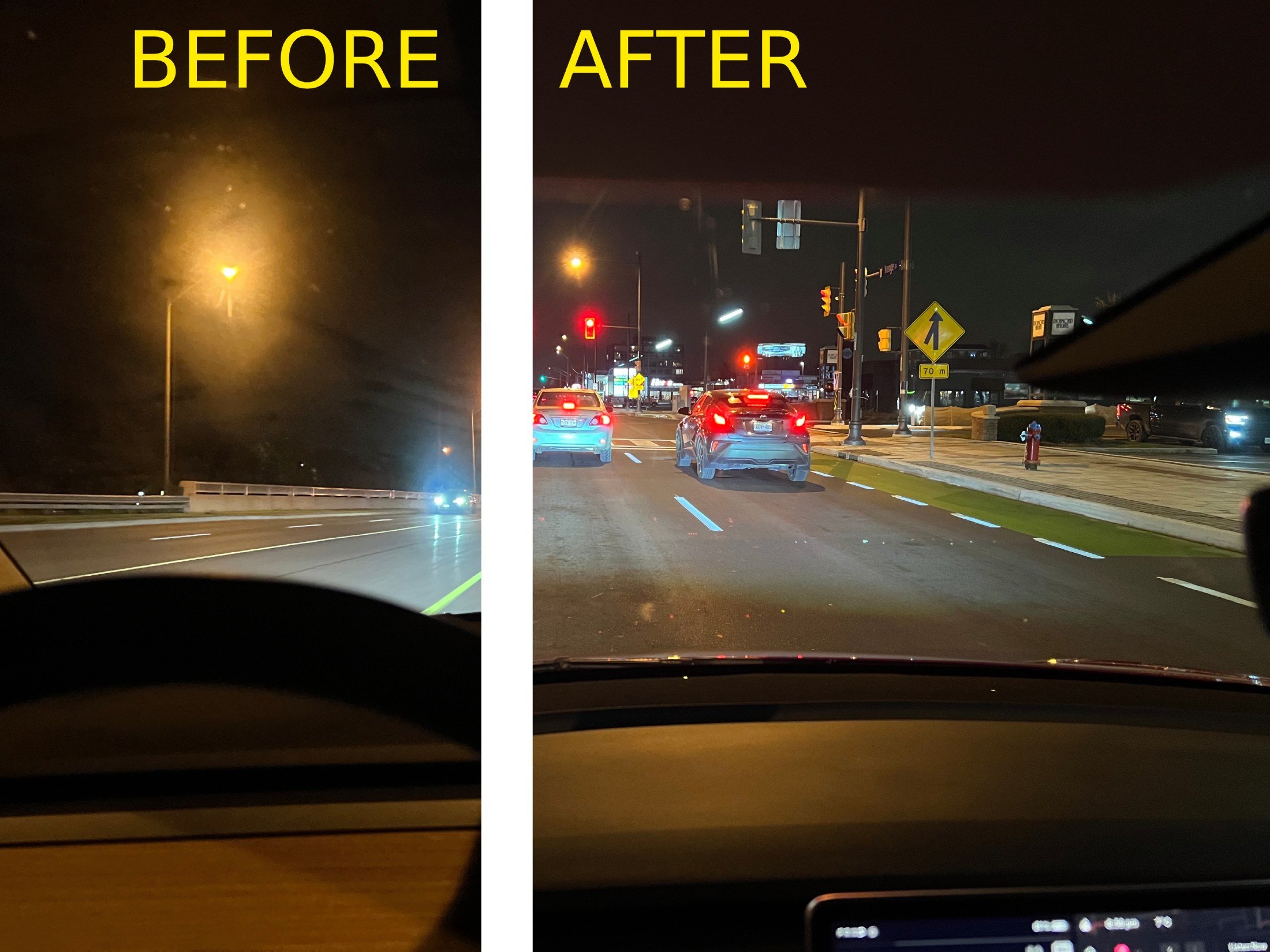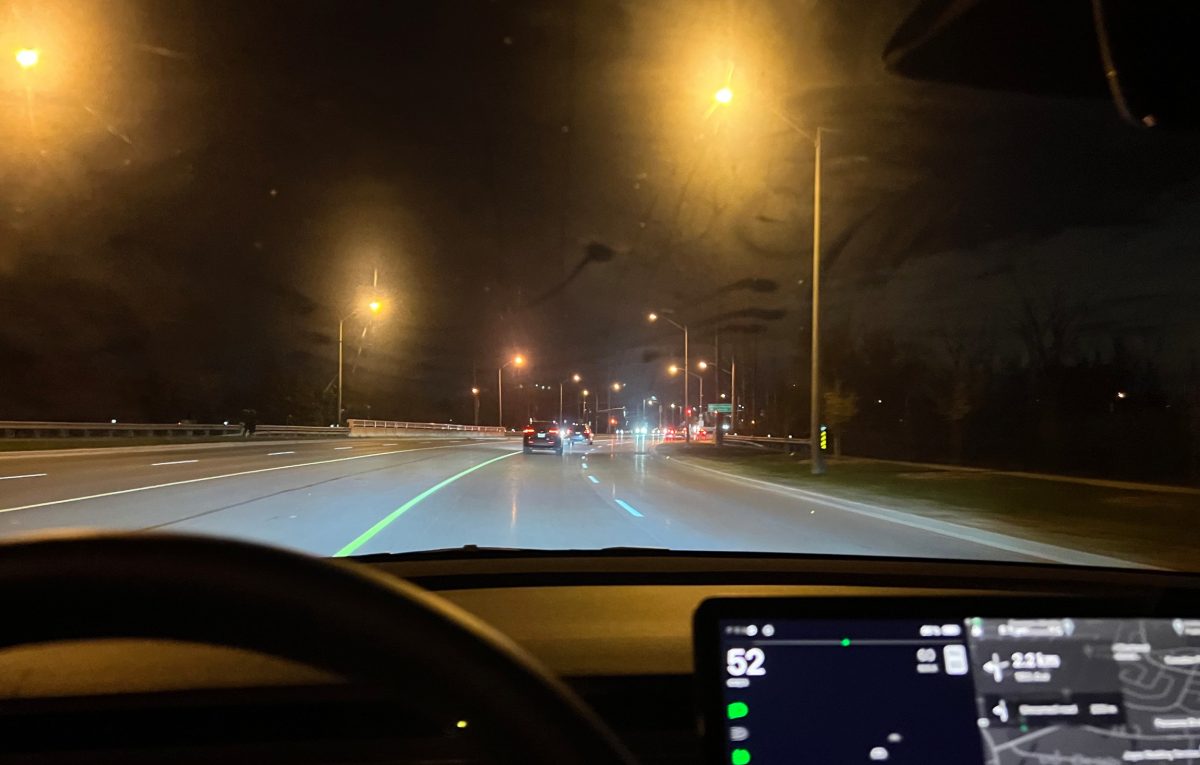Have you noticed a foggy haze covering the windshield of your Tesla, making it difficult to see out at night? This issue was bothering me for weeks until I discovered the source of the haze. Although I was blasting the windshield with the defog HVAC cycle and using a lot of energy, the haze was still not going away. Normal window fogging occurs due to moisture, but this was something else entirely.
Materials that make up the interiors of brand-new cars go through a period of off-gassing, especially when the interiors experience cycles of intense heating and cooling. All that plastic and vegan leather inside your Tesla slowly releases chemicals through gasses when heated, and those gasses rise, accumulate, and build up on the glass surfaces.
I’ve owned other new cars in the past and have experienced off-gassing. However, it appears that Tesla vehicles experience more severe off-gassing than other cars. The culprit is likely the artificial vegan leather seat surfaces. My specific car was delivered in the autumn of 2022, and I only experienced off-gassing haze after the summer of 2023 when the car spent time baking in the intense summer sun. But it’s common to see the effects of off-gassing in all cars during the first two years of ownership.
How to clean windshield and glass from off-gassing
Can you use glass cleaning products to remove off-gassing residue from your windshield? Maybe, it depends on the amount of off-gassing build-up. If you already have glass cleaning products on hand and you can avoid spending money, it doesn’t hurt to try. One thing to note though, is that many household glass cleaners like Windex may contain ammonia in their formula that may damage window tint. Check the label before application. Don’t apply glass cleaner with ammonia to tinted windows.
With heavier off-gassing haze like in my case, a more potent solution was required. Glass cleaner and paper towel would just simply smear the residue across the windshield and leave visible streaks. An auto detailer friend of mine recommended using a combination of an auto glaze product in combination with a waterless carwash solution.
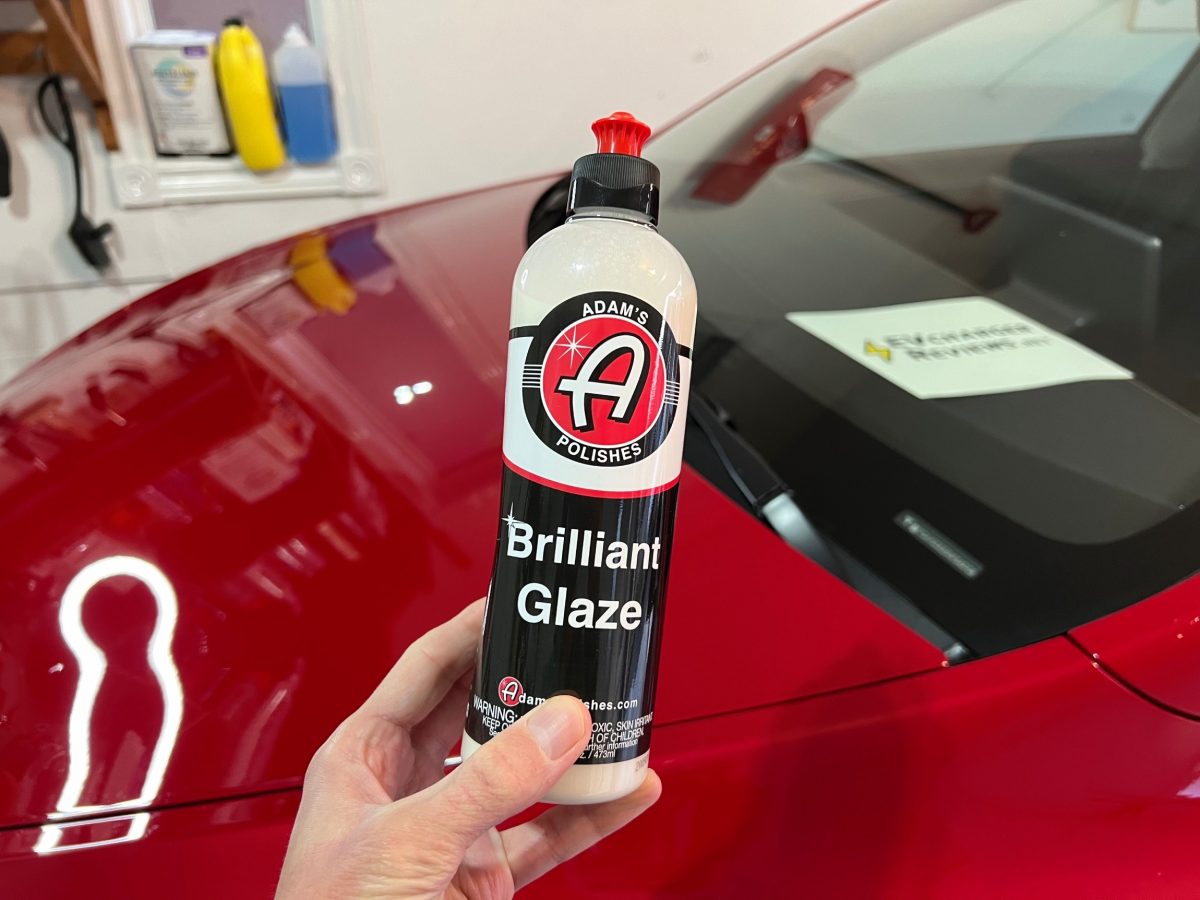
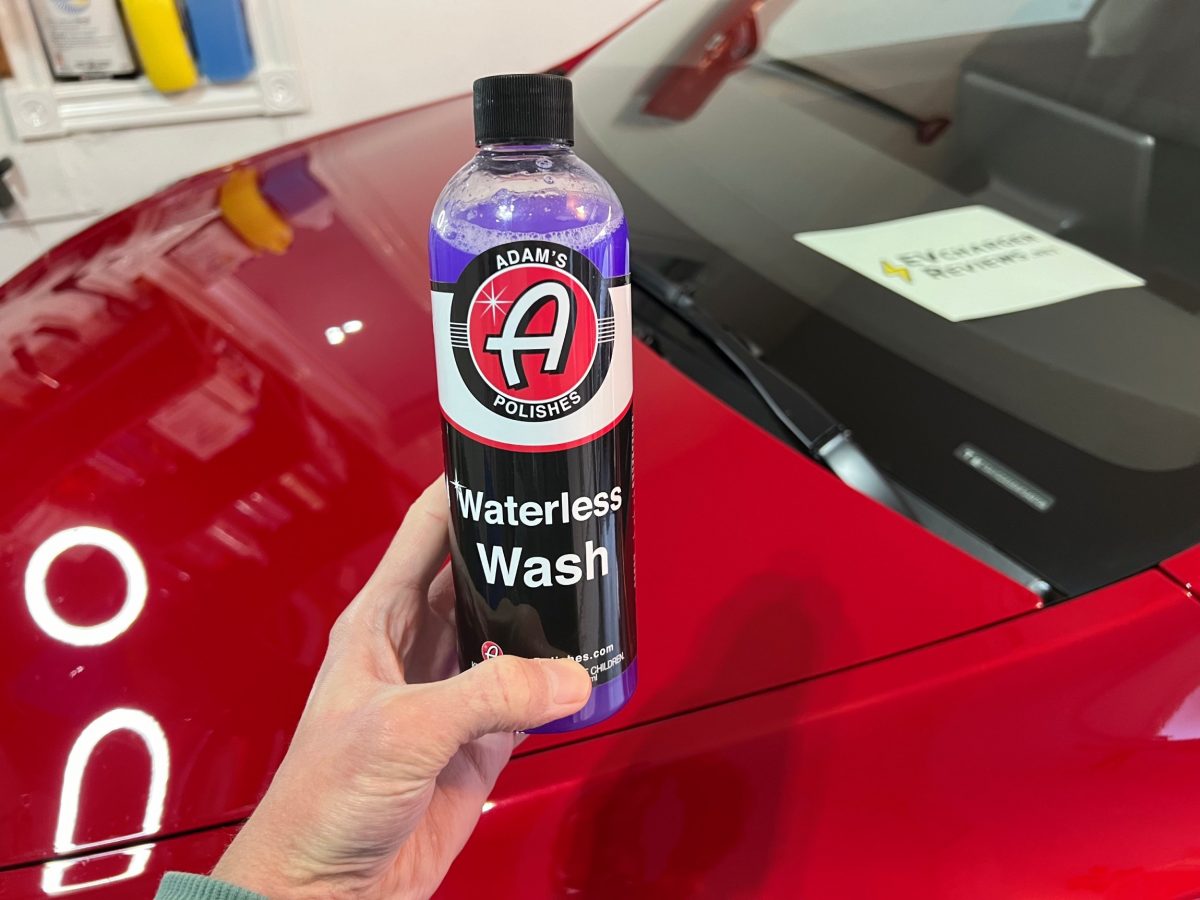
Products I used
- Adam’s Brilliant Glaze to trap the off-gassing residue. This helps lift the residue off the glass instead of smearing it.
- Adam’s Waterless Carwash and microfiber cloth to clean and lubricate the glass.
Steps
- You will want to apply a generous amount of the glaze product onto an applicator. I used a sponge, but the sponge absorbs too much of the product. A purpose-built applicator will work much better.
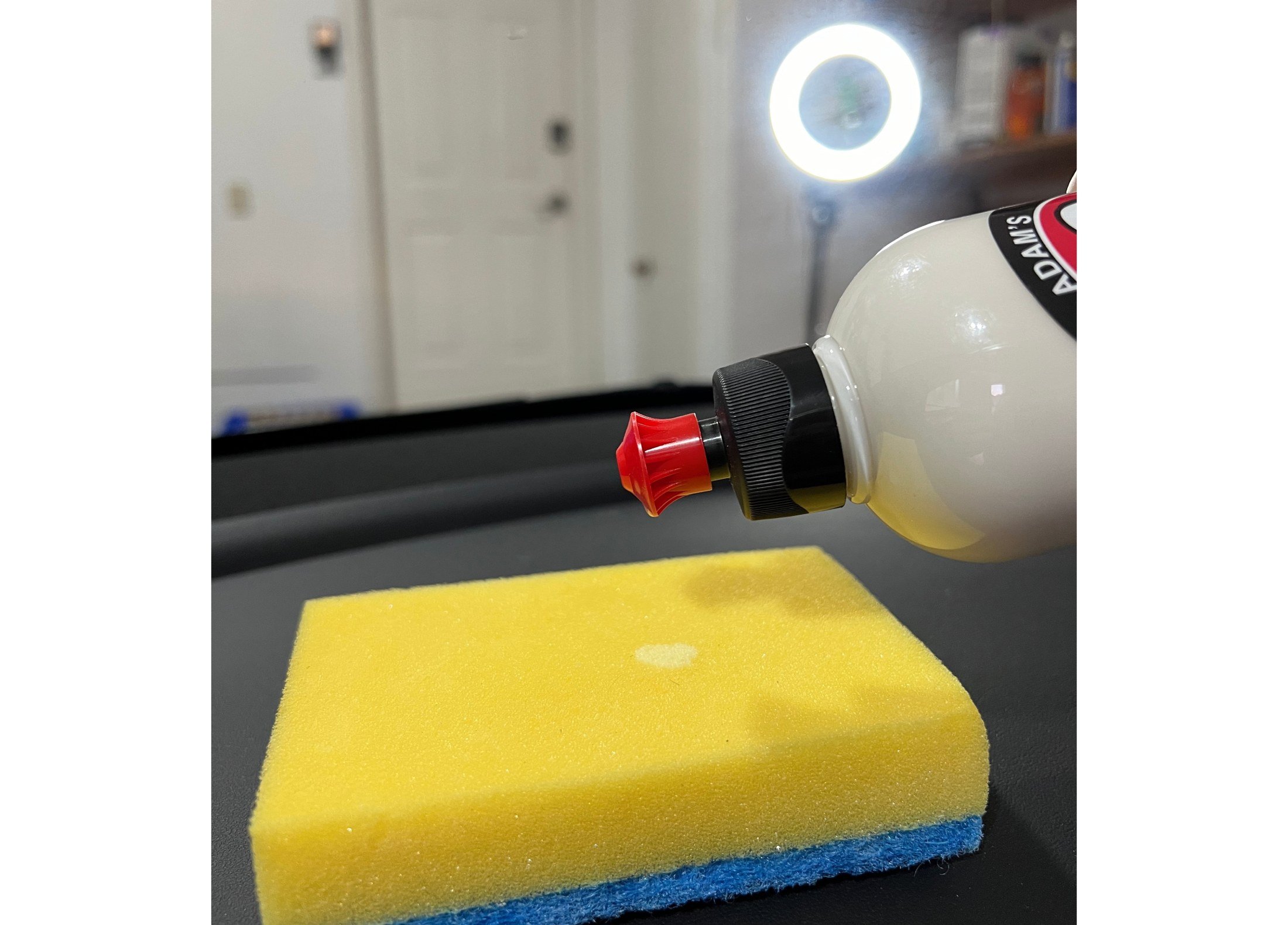
- Begin to rub the product into the glass using light to moderate pressure. Glass is hard and it will not scratch. Circular or line motions are fine but beware of getting the product onto the headliner.
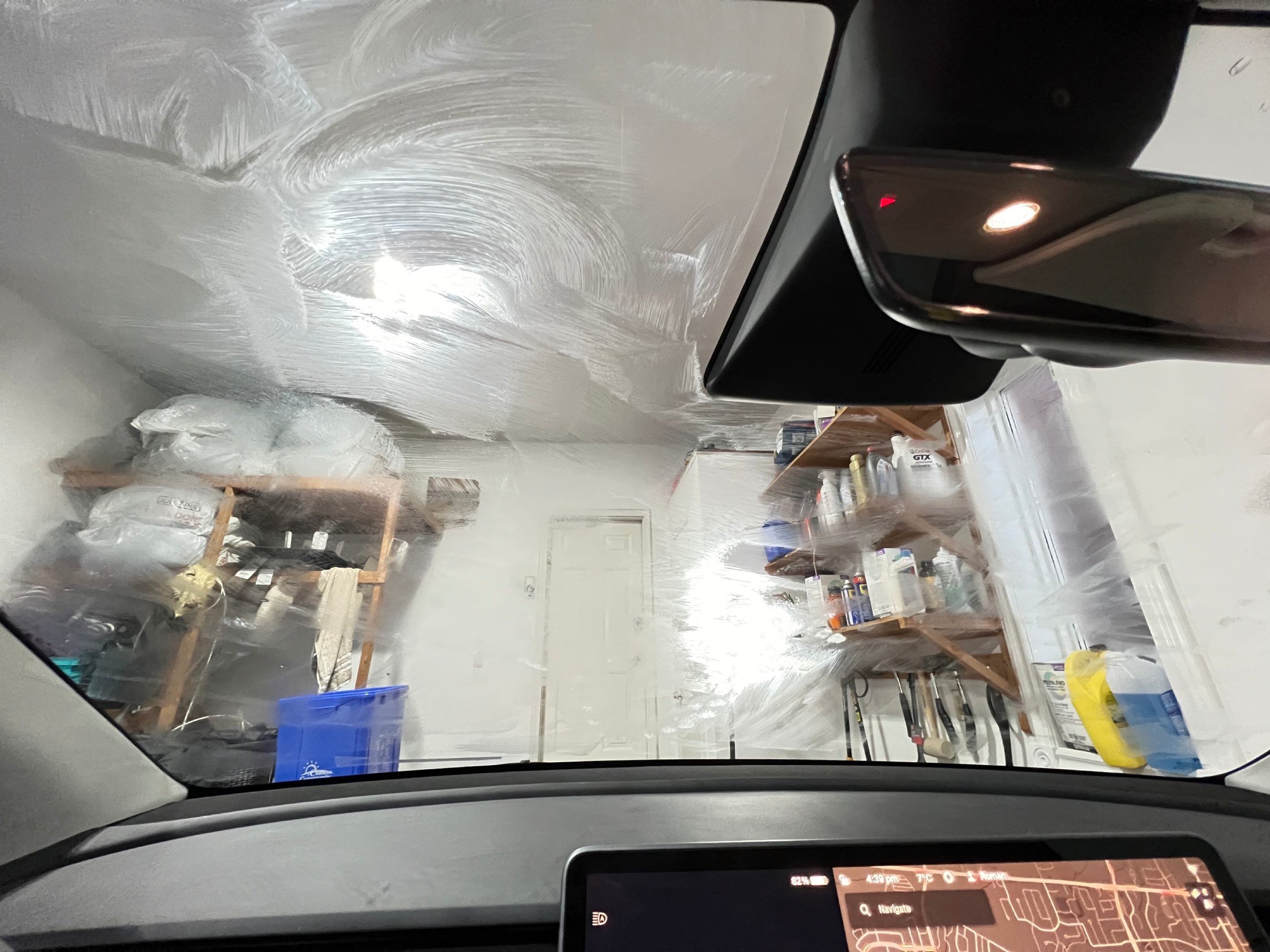
- Leave the product to sit on the surface of the glass for about five minutes. It will turn even more hazy than your off-gas covered windshield, but that is how the product works.
- Adam’s Waterless wash solution comes with a spray bottle attachment when purchasing the smaller containers. Generously spray your microfibre washcloth with the waterless carwash solution. You’ll want to do this while outside of the vehicle to prevent spraying the interior of the car.
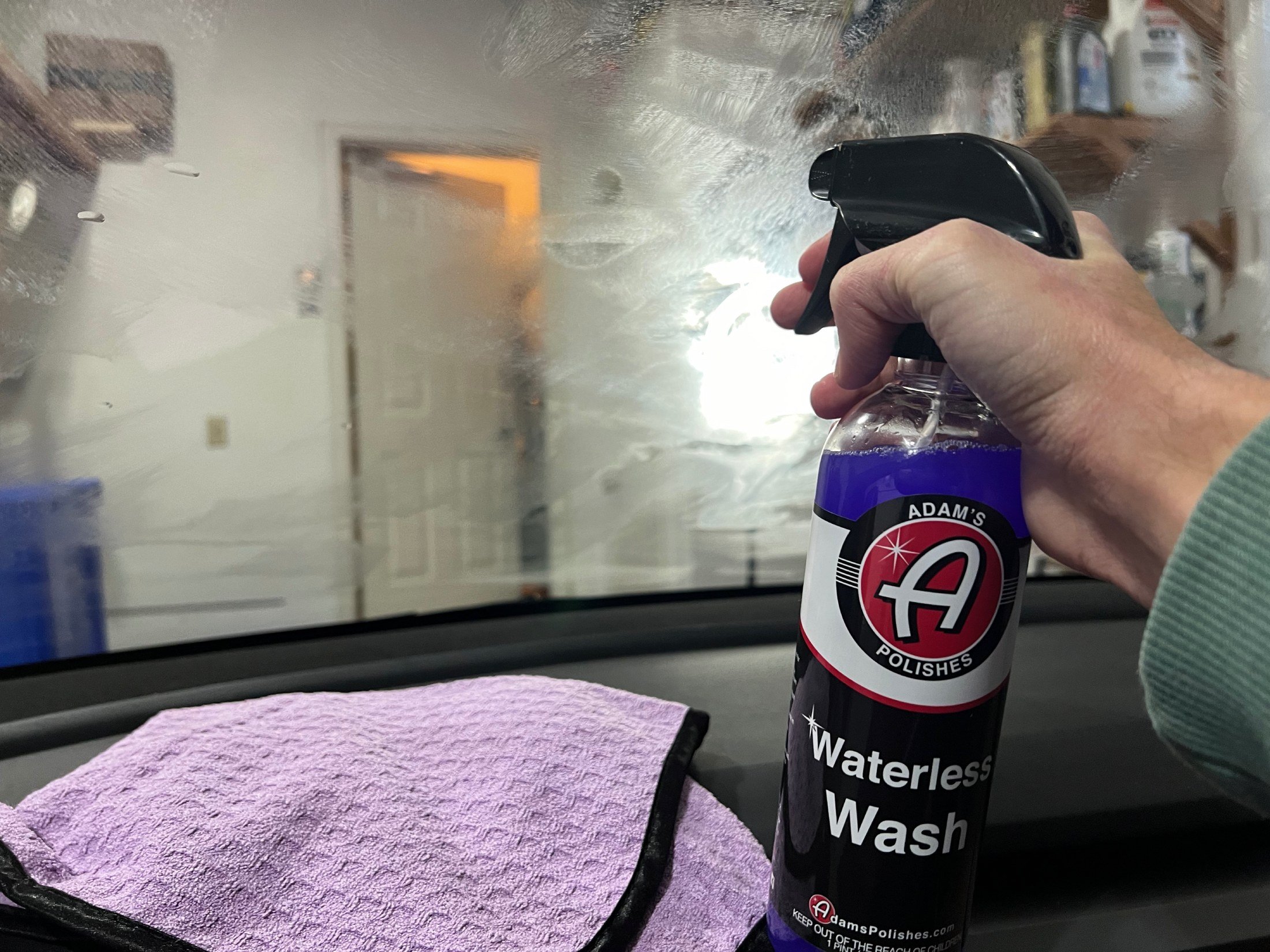
- Use the cloth and waterless carwash solution to wipe away and clean your windshield. If you fold your cloth into quarters, you will have several clean sides. It may take several passes and multiple sprays to clean all of the residue from the off-gassing and glaze product.
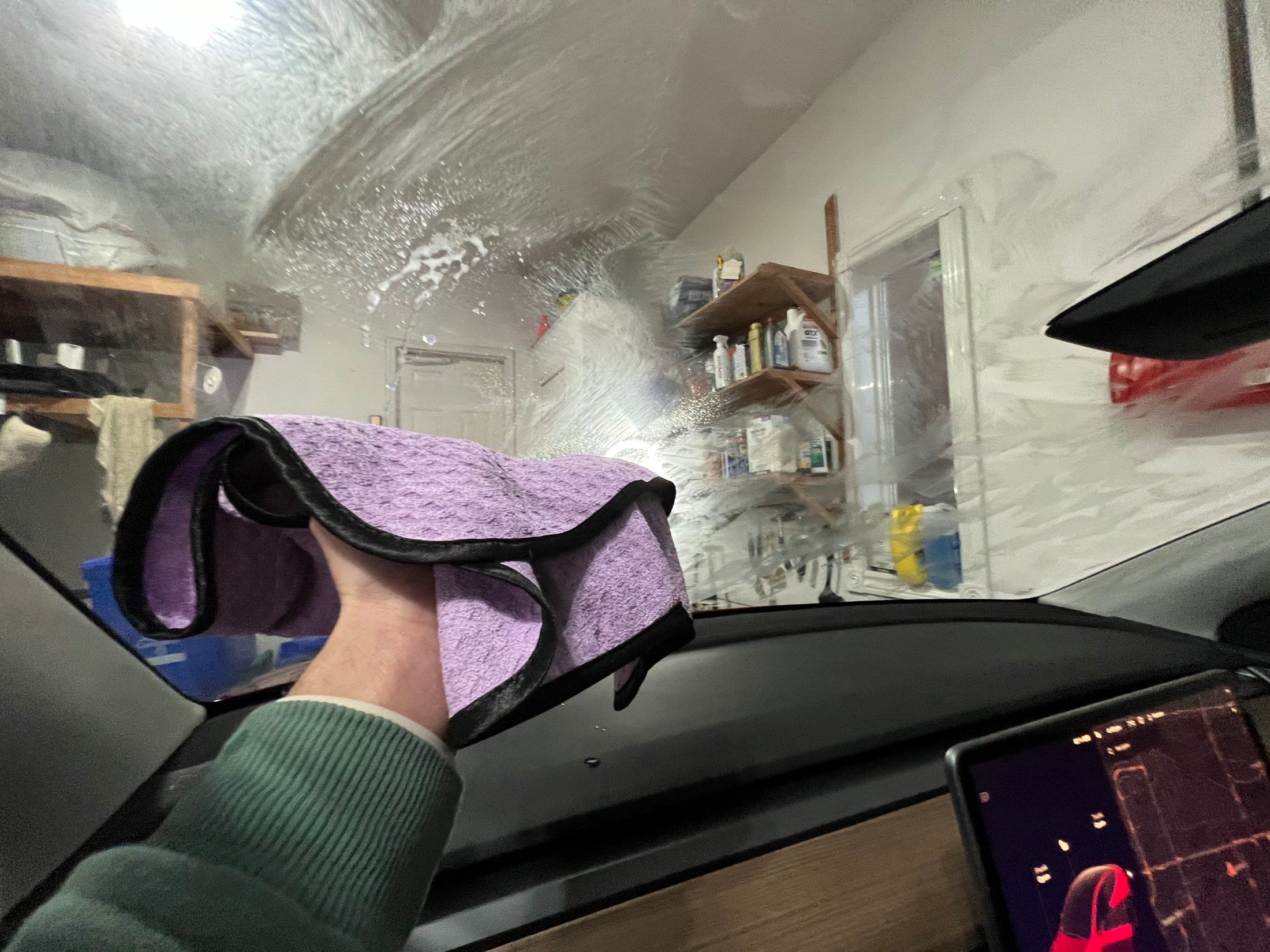
- Be sure to leave some amount of microfiber cloth dry. A dry cloth will help remove streaks from the last wiping pass of the glass.
- Once done, go for a nighttime drive to appreciate the results of your work!
Here are my before and after results. You can use this method on all interior windows.
